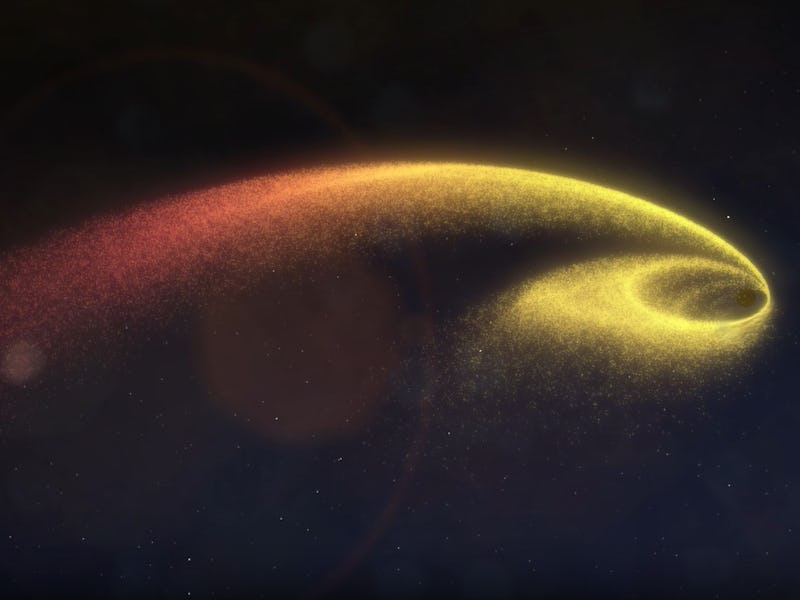Astronomers Stumbled Upon A Rare Chance To Capture Just How Fast A Supermassive Black Hole Spins
One unlucky star brought fortune to these astronomers.

There are behemoths that lurk at the center of almost all large galaxies in the known universe, including the sleepy giant in our Milky Way.
These are supermassive black holes, and they’ve been critical to the universe’s evolution. A new study, published today in the journal Nature, offers a fascinating new method to measure their spins. This ability could help astronomers flesh out how our universe came to look as it does today.
Back in 2020, astronomers noticed some strange activity. Using the Zwicky Transient Facility in California, they detected telltale signs that a star was going through what scientists call a tidal disruption event, in which an intense field of gravity rips a star apart. Tidal disruption events really only come from one thing: monster black holes. They realized what they were witnessing was a big black hole feasting on a star.
An animation explaining the work of Pasham’s team.
Astronomers observed the black hole in detail using the International Space Station’s NICER telescope, which is short for Neutron star Interior Composition Explorer. They found a few interesting details. Every 15 days, the supermassive black hole experienced a shift in X-ray intensity, and this pattern remained steady for the entirety of the four months they studied it.
From this, they were able to estimate the spin speed of the black hole. Finding such a specific detail about an object lurking roughly a billion light-years away is impressive. But the researchers say this new technique might be able to help solve some riddles about how the universe came to be. Specifically, how the hearts of galaxies evolved from Cosmic Dawn to today.
The supermassive black hole of the new study behaves somewhat like a kid swaying their hips to move a hula hoop. From the motion of the toy — in this case, the ring of shredded gas from the victim star — helped astronomers observe how the object’s intense gravity warps space-time to affect the disk. Black holes are so dense that not even light can escape them. But accretion disks around the black holes do emit light. They trace the path of this space-time warp. The black hole creates a drag called Lense-Thirring precession, and from this, astronomers deduced the spin speed.
This isn’t the first time that astronomers have derived the spin measurements of supermassive black holes and smaller black holes. But according to the lead author of the new study, MIT research scientist Dheeraj Pasham, this was the first time that the black hole’s warp of the space-time, paired with the luminosity of the accretion disk of an otherwise invisible object, led to finding the black hole’s spin speed.
A NASA animation depicting a tidal disruption event.
The team owe much of their accomplishment to this black hole being a great candidate for study. It helped that the black hole was tilted towards Earth, letting astronomers investigate the X-rays clearly. NICER also has an easier job if it’s targeting objects in the direction of Earth’s poles, where the Sun can’t obstruct. The black hole is in the polar part of our sky, fortunately.
The spin speed of the black hole is a fingerprint. An abundance of slow-spinning black holes would mean frequent chaotic mergers between black holes — and the galaxies they reside in. “You’re dumping angular momentum in random orientations, and essentially spinning down the remnants,” Pasham tells Inverse.
“The other scenario is, let’s say you find most of the black holes are fast-spinning as close to the speed of light, that means they grew by accretion. Like a spinning top,” Pasham added. Over time, the balls of gas pulled in towards the black hole sped it up a little more.
This new research, along with discoveries emerging from a myriad of new telescopes taking flight soon, the universe’s history may not stay so hidden for long.